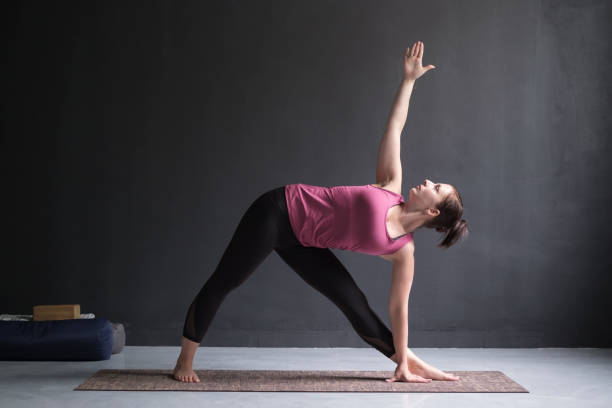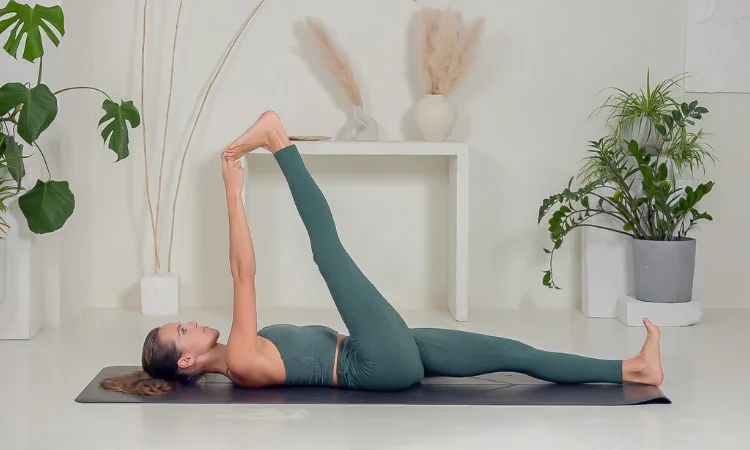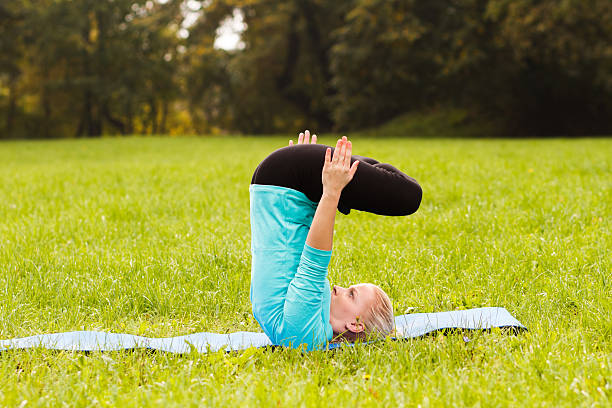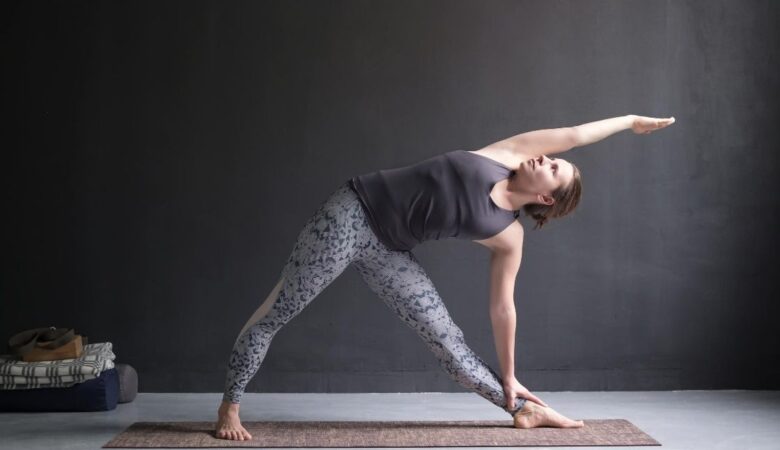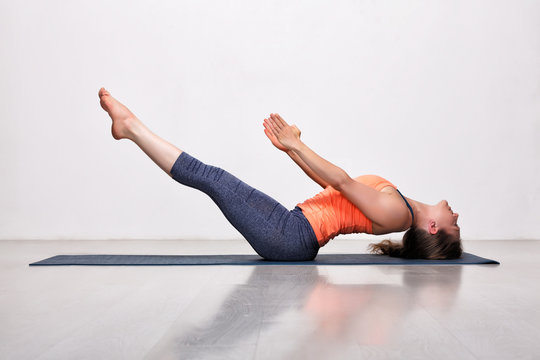Trikonasana, or the Triangle Pose, is a foundational standing posture in yoga that emphasizes alignment, balance, and deep stretching. The term “Trikonasana” comes from the Sanskrit words trikona (triangle) and asana (pose), aptly named because the body forms a triangle-like shape during the practice. It is a staple in many yoga traditions, including Hatha, Iyengar, and Vinyasa, and is known for its powerful physical and energetic effects.
Table of Contents
What is Trikonasana?
Trikonasana is a standing yoga posture that involves extending the legs wide apart and reaching one arm down toward the shin, ankle, or floor, while the other arm stretches upward. The chest opens, the spine lengthens, and the entire body becomes involved in the stretch, creating a triangular shape between the legs and the floor.
Step-by-Step Instructions to Practice Trikonasana:
See below how to practice Triangle Pose…
Starting Position:
Stand in Tadasana or Mountain Pose, with feet together and arms at your sides. Take a deep breath, step your feet wide apart about 3 to 4 feet.
Foot Alignment:
Turn your right foot out 90 degrees so the toes point to the right. Turn your left foot slightly inwards (about 15 degrees). Ensure the right heel is aligned with the arch of the left foot.
Arm Positioning:
Extend both arms parallel to the floor at shoulder height, palms facing down. Inhale deeply.
Entering the Pose:
Exhale and reach your right hand forward as far as possible, hinging at the hip (not the waist). Lower the right hand to your shin, ankle, or the floor outside your right foot.
Extend your left arm vertically toward the sky, in line with your shoulders. Gaze up at the left thumb or keep the neck in a neutral position if it strains.
Alignment Tips:
Keep both legs straight and strong. Avoid collapsing into the bottom side; instead, lift and open the chest. Engage the thighs and draw up the kneecaps to activate the legs.
Hold and Breathe:
Stay in the pose for 5–10 breaths. To come out, inhale and rise with the arms extended. Repeat on the left side.
Benefits of Trikonasana:
Here is a detailed list of the Benefits of Trikonasana or Triangle Pose:
Improves Flexibility:
Trikonasana stretches the legs, hips, groins, hamstrings, spine, and shoulders. Regular practice enhances overall body flexibility, especially in the side waist and hips.
Strengthens the Body:
This pose tones and strengthens the legs, knees, ankles, arms, and core. It also engages and builds endurance in the thighs and back muscles.
Enhances Balance and Stability:
By grounding the feet and maintaining a wide base, the pose helps develop physical stability and improve coordination.
Stimulates Digestion:
The lateral stretch gently massages and stimulates abdominal organs, improving digestion and relieving constipation and bloating.
Opens the Chest and Shoulders:
Trikonasana expands the chest and improves breathing capacity. It also relieves stiffness in the upper back and shoulders.
Boosts Mental Clarity:
Focusing on alignment and breath calms the mind, reduces stress, and enhances concentration.
Therapeutic Effects:
Helps in relieving back pain and sciatica. It can be beneficial for flat feet.
Supports women during pregnancy (with proper modifications). Eases menstrual discomfort.
Energizes the Body:
This pose stimulates the nervous system and revitalizes energy by opening energy channels and activating the solar plexus chakra (Manipura).
Precautions and Contraindications:
While Trikonasana is generally safe, certain conditions require caution:
Avoid or Modify If You Have:
- Neck pain or stiffness: Keep your gaze forward or downward.
- High or low blood pressure: Avoid looking upward; consult a teacher.
- Migraine or vertigo: Practice against a wall or avoid the pose.
- Recent injury or surgery: Especially in the knees, hips, or spine.
Pregnancy:
- Can be practiced with modifications and support after the first trimester.
- Use a chair or block to support the lower hand.
Tips for Beginners:
- Use a block under your bottom hand if you can’t comfortably reach the floor.
- Practice the pose against a wall to understand proper alignment.
- Keep a micro-bend in the front knee if you’re hypermobile.
- Focus on lengthening the torso rather than touching the floor.
Variations of Trikonasana:
1. Parivrtta Trikonasana (Revolved Triangle Pose):
- A deeper variation involving a spinal twist.
- Strengthens the legs and massages the abdominal organs.
2. Baddha Trikonasana (Bound Triangle Pose):
- An advanced variation involving a bind around the back and under the thigh.
- Improves shoulder mobility and balance.
Integration in Yoga Practice:
Trikonasana can be:
- A part of standing sequences in Hatha or Vinyasa yoga.
- Integrated into Iyengar yoga for detailed alignment work.
- Practiced early in a sequence to open the hips and hamstrings.
- Used as a preparatory pose for deeper twists and lateral stretches.
Final Thoughts:
Trikonasana is more than just a stretch, it’s a pose that combines grounding stability with expansive openness. Whether you’re a beginner or a seasoned yogi, incorporating Triangle Pose into your regular practice can help cultivate balance, strength, and inner clarity. With conscious breathing and mindful alignment, Trikonasana becomes a powerful tool for both physical and energetic transformation.
FAQs:
Q. Can beginners do Trikonasana?
A. Yes, with proper guidance and use of props like blocks, beginners can safely practice Trikonasana.
Q. How long should I hold Trikonasana?
A. Hold for 30 seconds to 1 minute on each side, depending on comfort and strength.
Q. Is Trikonasana good for back pain?
A. Yes, when done correctly with attention to spinal alignment, it can help relieve mild back discomfort.
Q. Can Trikonasana help reduce belly fat?
A. It aids digestion and tones abdominal muscles, which can support overall weight loss when combined with a healthy lifestyle.
Q. Should I lock the knees in Trikonasana?
A. Avoid hyperextending the knees. Engage the thigh muscles and maintain a soft micro-bend if needed.

